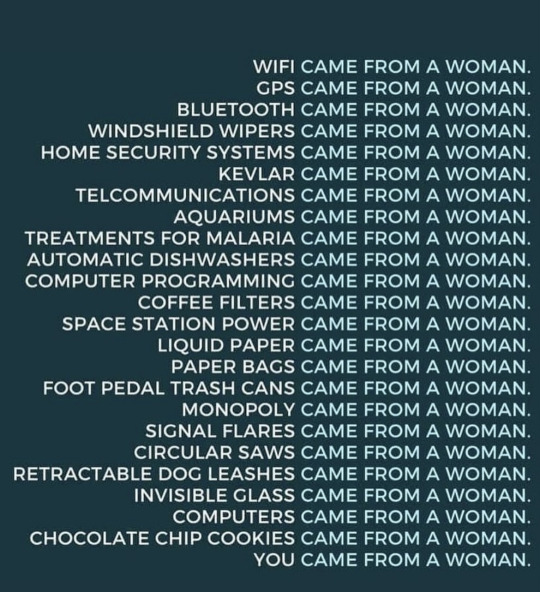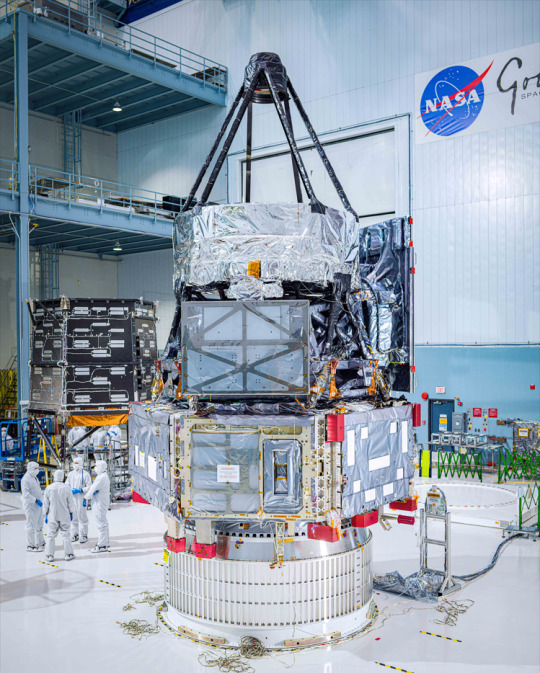#engine technology
Explore tagged Tumblr posts
Text

We get it, Japan! You like dual overhead cam engines!
#animated gif#animated gifs#gif#gifs#old advertisements#old ads#retro#VHS#DOHC#Dual overhead cams#engine technology#divers#synchronized diving#synchronized swimming#90s
15 notes
·
View notes
Text
Why do cars now not get better gas mileage?
That's a perceptive observation—while engine technology has advanced significantly, the average fuel economy of new vehicles in the U.S. has stagnated since 2014 after decades of improvement. Here’s why, distilled into key factors:
⚖️ 1. Vehicle Size & Weight Have Skyrocketed Shift to Trucks/SUVs: Over 80% of new vehicles sold in the U.S. are trucks, SUVs, or crossovers—up from 50% in 2013. These are inherently heavier (+800–1,500 lbs vs. sedans) and less aerodynamic.
Safety Regulations: Airbags, reinforced frames, crash structures, and advanced driver aids add 200–500 lbs per vehicle vs. 2000s-era cars.
Feature Bloat: Panoramic roofs, power seats, advanced infotainment, and sound-deadening materials add mass.
🚀 2. Performance Expectations Have Increased Power Over Efficiency: In 2000, the average vehicle had 172 HP and 0–60 mph in 10.5 seconds. Today: 246 HP and 0–60 in 7.5 seconds—despite added weight.
Turbocharging Trade-Offs: Smaller turbo engines (e.g., 2.0L 4-cyl replacing V6s) boost power but often underperform EPA ratings in real-world driving due to turbo lag and driving habits.
🔧 3. Emissions Controls Reduce Efficiency Gasoline Particulate Filters (GPFs): Mandatory in Europe and some U.S. models post-2020 to trap pollutants—they restrict exhaust flow, increasing backpressure and lowering MPG by 2–5%.
Lean-Burn Engine Limitations: Stricter NOx regulations prevent the use of ultra-lean combustion modes that could boost MPG.
🔌 4. Hybrids/Electric Focus Divert Innovation Automakers invest heavily in EVs and plug-in hybrids to meet regulations. Gains from these vehicles offset stagnant gas-engine MPG in fleet averages, but pure gasoline engines see fewer breakthroughs.
Example: Toyota shifted R&D from next-gen gasoline engines to solid-state batteries.
🌪️ 5. Aerodynamics Hit a Wall Despite advanced modeling, drag reduction gains are marginal:
1980s sedans: Cd ~0.35
2024 sedans: Cd ~0.27 (optimal)
SUVs/trucks: Cd ~0.30–0.40 due to height and frontal area. Further improvements are costly and limited by design trends (tall hoods, aggressive grilles).
📈 6. The CAFE Standards Loophole Corporate Average Fuel Economy (CAFE) gives trucks/SUVs looser targets vs. cars. A "large pickup" only needs 25 MPG by 2026 vs. 52 MPG for a sedan.
Automakers exploit this by shifting production to light trucks—artificially lowering fleet efficiency.
⛽ 7. Real-World vs. Lab Testing EPA test cycles (last updated in 2008) underestimate real-world driving:
Aggressive acceleration
Higher highway speeds (75–80 mph vs. 48 mph test cycle)
Use of AC/heat
Modern engines optimized for tests often underdeliver on roads.
💡 Why It’s Not All Bad: Hidden Efficiency Gains Engine Tech: Direct injection, variable valve timing, and 10-speed transmissions do improve efficiency—but gains are consumed by weight and power demands.
Hybridization: Mild-hybrid systems (e.g., Ford F-150) add 2–4 MPG without plug-in complexity.
High-Efficiency Exceptions: Vehicles prioritizing MPG (e.g., Toyota Prius, Honda Accord Hybrid) achieve 50+ MPG—proving it’s possible without compromises.
🔮 Future Trajectory Stricter CAFE 2026 rules may push fleet averages to 52 MPG (vs. 35.2 MPG today).
Turbo-hybrid systems (e.g., Ford Maverick: 37 MPG pickup) and PHEVs bridge the gap.
Weight reduction via aluminum/steel composites remains critical but expensive.
✅ Key Takeaway
Cars are more efficient per pound and per horsepower than ever—but consumer demand for large, fast, feature-heavy vehicles and regulatory trade-offs have hidden these gains. The push toward electrification will likely accelerate net efficiency, but core gasoline engines face diminishing returns without a revolution in materials and aerodynamics.

#gas mileage#engine technology#youtube#young artist#car rental#car#electric cars#cars#classic cars#carlos sainz#truck#porsche#suv#lamborghini#bmw#sabrina carpenter#older vehicles#vehicles#autonomous vehicle headlights#overtake another vehicle#vehicle#automobiles#auto#auto mode#automotive#automobile#autos#supercar#convertible#automation
4 notes
·
View notes
Text
#Airbus CEO#New engine technology#Engine technology#Airbus engines#CEO optimism#Technology verdict#Aerospace technology
2 notes
·
View notes
Text

What does it take to see this?
Decades of dreamers, inventors, scientists and artists working together to create a labor of love: a telescope capable of peering deep into the universe and back through time.
The James Webb Space Telescope has allowed us to see the earliest galaxies, the auroras and rings on our gas giants, and even detect clouds on planets far beyond our solar system, all because a group of dreamers looked at the universe with curiosity.
Witness the incredible story of Webb’s journey – from an impossible idea to a scientific marvel – all through the eyes of the people who made it possible in our new documentary. Cosmic Dawn is streaming now on NASA+.
#NASA#James Webb Space Telescope#astrophotography#space photography#space#galaxies#documentary#film#astronomy#engineering#technology#tech
3K notes
·
View notes
Text

Alt: the inventor vs the invention. a language revitalization robot that speaks my Indigenous language Anishinaabemowin pic.twitter.com/ydo88kMzT9
Photo of inventor Daniel Boyer holding language bot. Hair in large buns with braids going down and wearing cream shirt with colorful abstract design on it.
— Danielle Boyer🤖 (@danielleboyerr) February 1, 2024
#Danielle Boyer#Inventors#Engineers#Language#Robots#Anishinaabemowin#Indigenous#Indigenous people in tech#Tech#Technology#Alt text in image#Image description in image
6K notes
·
View notes
Text
however bad of a day you're having, know that it's not nearly as bad as whatever the Crowdstrike security team is going through since waking up this morning
#accidentally bricking millions of computers worldwide because of a faulty security update pushed through on Friday evening#has to be some special circle of hell for software engineers#crowdstrike#current events#technology
2K notes
·
View notes
Text

#radical feminism#womens rights#feminism#gender critical women#radical feminist safe#adult human female#biological women#rad fem#trans exclusionary radical feminist#terfsafe#women’s issues#inventions#history#womens history#technology#medicine#education#entertainment#home cooking#engineering
2K notes
·
View notes
Text

#pinterest find#aesthetic#divine technology#divine machinery#technology and society#engineering#random photos#people#pinterest
526 notes
·
View notes
Text
It's so funny when people say "not all AI sucks! only generative AI!" because generative AI is genuinely an amazing technology.
You know why those early AI images like crayon and such were so strange and dreamlike? It's because generative algorithms actually do generate those images. They don't copypaste like a collage, images are created pixel-by-pixel. Generative AIs are actually systems that assimilate concepts, associate them to images, are able to translate instructions in plain human text instead of code and create new things from it (this was seen as pure science fiction less than 5 years ago). This is why AI images now have better quality, because new models are able to understand more concepts and implement them. Because the idea with generative AI isn't and shouldn't for it to be able to just copy-paste images or text, it's the ability to generate new images or text from learned concepts.
This post gets, in a very easy, understandable way, into the details on how this works. And I hope you do give it a read no matter your stand on this:
This, as I always say, was considered pure science fiction, a thing that would not exist until at least the 2100s if at all, and it is now here. And not only by corporations, but open-source models are being researched by the minute.
No, I do not care for AI corporations and I don't care for what they're mostly trying to use AI for (advertising and customer service). I care about what can become of this technology. Advertising and mass produced shit will be shit, no matter if it's done by human or AI. Do I expect an advertisement to be shit because it uses AI? No, I expect it to be shit because it is an advertisement.
What will be interesting, and I think we will see more in the future when the utterly poisoned current discourse about AI calms down, will be when artists with interesting concepts and a good handle of these tools start to create new things, much like synthesizers or photographers didn't ruin music or art, because there was always an artist behind the tool in the first place. Someone is doing those prompts to create something. Your question should be who and why.
#cosas mias#I don't know why I try to take a nuanced measured tone with this since people will scream bloody murder at even the merest hint#that AI might not be a satanic engine but an emerging technology with potential even artistic potential#but whatever
234 notes
·
View notes
Text
a printer is a type of write-only memory device
#computer science#computers#compsci#computer engineering#engineering#microelectronics#electronics#hardware#computing#technology#glaciereconobox
153 notes
·
View notes
Text


4.21.25
Today went a little bit better than it has been lately. I managed to lock in over the weekend and finish quite a bit of problem sets for discrete math. Final exam this week 🤌
#studyblr#stemblr#study aesthetic#information technology#women in stem#100 days of productivity#network engineering
235 notes
·
View notes
Text
The funniest possible outcome of all these Google antitrust disclosures re: deceptively re-writing people's search queries in order to maximise Google's ad revenue would be if the corporations that paid for those ads decide that Google has been defrauding them the whole time. The ultimate "bite each other's dicks off" scenario.
#computers#technology#internet#search engines#google#antitrust#current events#violence mention#penis metion
2K notes
·
View notes
Text
Airbus CEO optimistic about upcoming engine Technology verdict

At the Global Aerospace Summit, Airbus CEO Guillaume Faury highlighted the promising potential of CFM International's new open-rotor technology, noting its potential for increased efficiency and reduced emissions. However, he also pointed out the uncertainty surrounding its commercial viability.
Faury also addressed ongoing delays in the delivery of the current generation LEAP engines from CFM International, stating, “They are behind schedule with their deliveries.” CFM has yet to respond to these comments.
In July, Airbus, the world's largest aircraft manufacturer, issued a profit warning and cut its delivery target by 30 units to a total of 770 aircraft. This reduction was due to supply-chain disruptions affecting components like engines and cabin interiors, with LEAP engines experiencing particularly severe delays.
CFM International, a joint venture between GE Aerospace and France's Safran, is a leading jet engine manufacturer by sales volume. Its LEAP engines power all Boeing 737 MAX aircraft and approximately half of the Airbus A320neo fleet, competing with Pratt & Whitney for airline contracts.
READ MORE
#Airbus CEO#New engine technology#Engine technology#Airbus engines#CEO optimism#Technology verdict#Aerospace technology#news#marketing#success#ceo#business
0 notes
Text

One of the two assembled critical sections of NASA’s Nancy Grace Roman Space Telescope in the cleanroom at NASA’s Goddard Space Flight Center in Greenbelt, Maryland. This assembly consists of Roman’s optics, primary science instruments, and spacecraft bus.
Happy Birthday, Dr. Nancy Grace Roman!
Today marks what would have been the 100th birthday of Dr. Nancy Grace Roman — NASA’s first chief astronomer and the namesake for NASA’s nearly complete Nancy Grace Roman Space Telescope.
Dr. Roman championed NASA’s Hubble Space Telescope and paved the way for other major space-based telescopes like NASA’s James Webb Space Telescope and now the upcoming Roman telescope — currently assembled into two large structures technicians will soon connect.
Key assessments at NASA’s Goddard Space Flight Center in Greenbelt, Maryland are ensuring that both Roman’s critical sections are ready for integration and additional tests as a complete observatory. Having recently passed a space environment test, Roman remains on schedule for launch by May 2027, with the team aiming for launch as early as fall 2026.
Learn more about Dr. Roman and stay up to date on the mission at nasa.gov/roman.
Make sure to follow us on Tumblr for your regular dose of space!
#NASA#Nancy Grace Roman Space Telescope#birthday#astronomy#engineering#technology#tech#Nancy Grace Roman#space
1K notes
·
View notes
Text

#programmer humor#programming#geek#nerd#programmer#technology#computer#phone#mac#windows#os#operating system#website#web development#dev#developer#development#full stack developer#frontend#backend#software#hardware#html#css#meme#despicable me#gru#joke#software engineer#apple
503 notes
·
View notes